02 May 2023
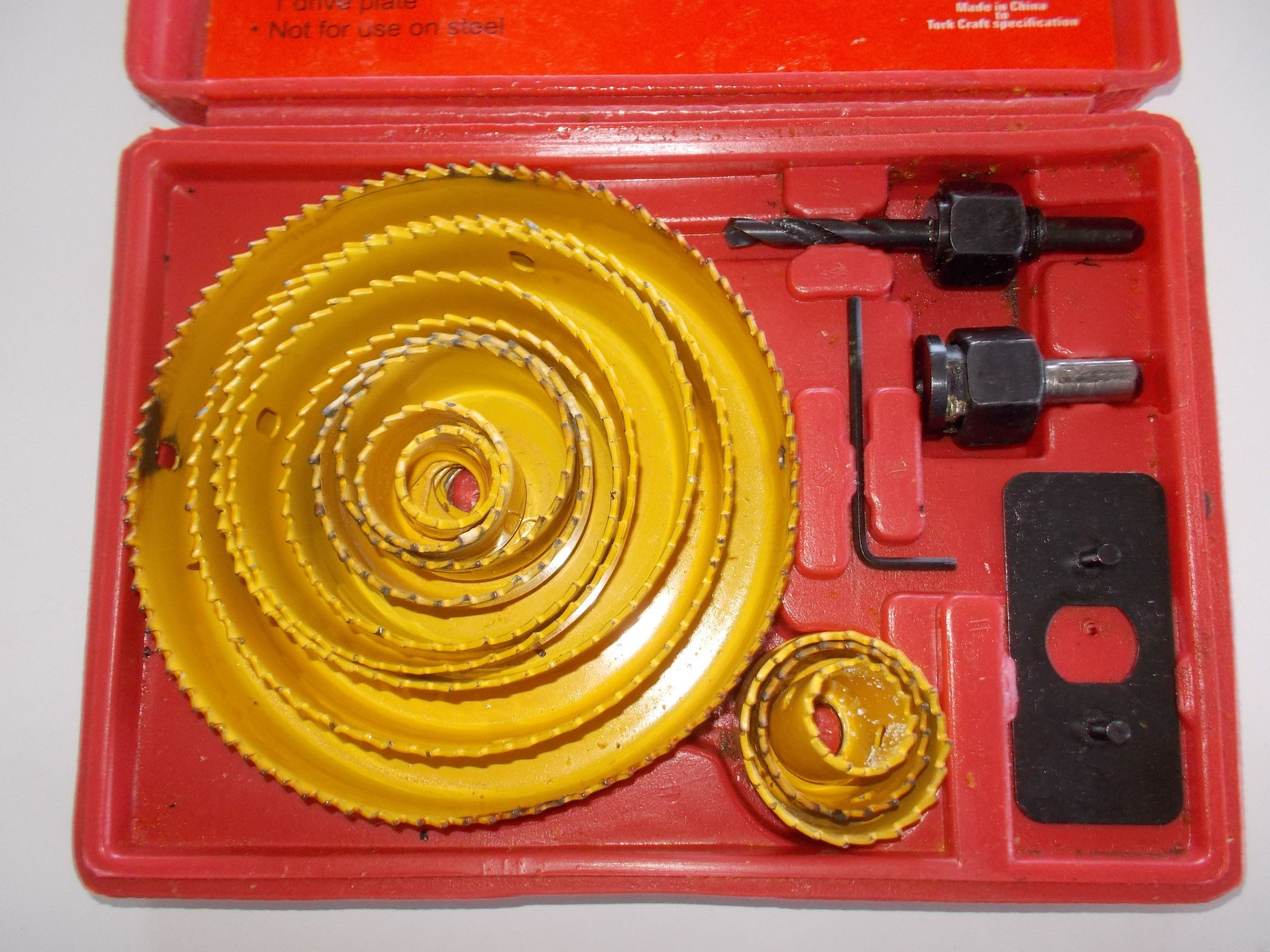
All about drills and bits – and more: Part 4 – holesaws – plus some hints and tips
Holesaws are used for cutting large diameter holes in soft and hard woods or plastic and also in metal. They will usually cut up to a depth of 18mm or so, though deeper versions are available and if cutting from the upper and lower surfaces, one can of course create holes in thicker materials. Holesaws are best used in a power drill at low speed as the blade saws its way through the material.
Note that holesaws designed for making holes in masonry, stone and so on, are often if not usually referred to as core bits.
In passing, if you are into making kiddies wooden toys, holesaws are great for making wheels – though they do need cleaning up and sanding before they are really child-friendly.
So, let’s take a look at what is out there… but before we do:
Caution
Never use a holesaw manufactured for use on wood on any type of masonry or stone, or on metal of any kind. You will need to buy a new holesaw if you do.
- This set of holesaws employs a single hub on to which the steel holesaw of the desired diameter is clipped, but you need to take care that the steep cutter is properly seated and locked into place; if not, it will come loose and damage the workpiece.
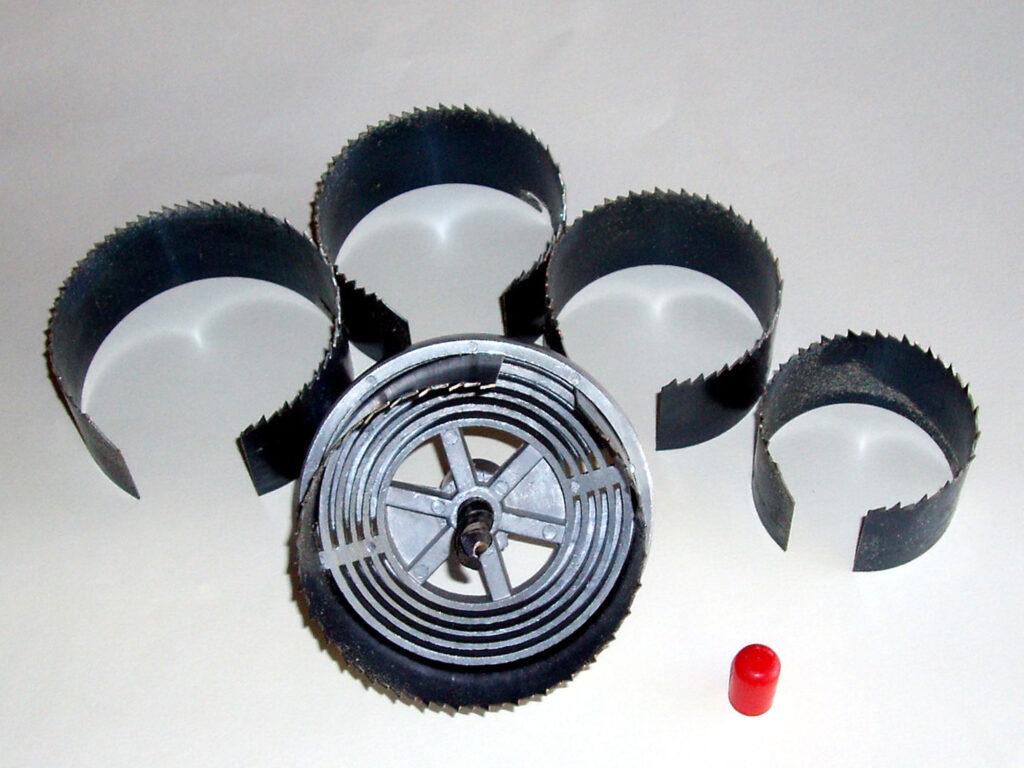
- Perhaps more common these days are sets such as the one shown here, comprising a range of holesaws. This kit comprises 12 carbon steel holesaws in the following sizes: 19mmØ, 22mmØ, 29mmØ, 32mmØ, 38mmØ, 44mmØ, 51mmØ, 64mmØ, 76mmØ, 89mmØ, 102mmØ and 127mmØ. They are designed to cut holes in soft materials such as soft and hard woods, plastics such as PVC and other soft materials up to 25mm thick, but they are NOT for use on steel. The kit also includes two mandrels on to which the holesaws are fitted and secured (the centring drill bit is known as the arbour), an Allen key and a drive plate.
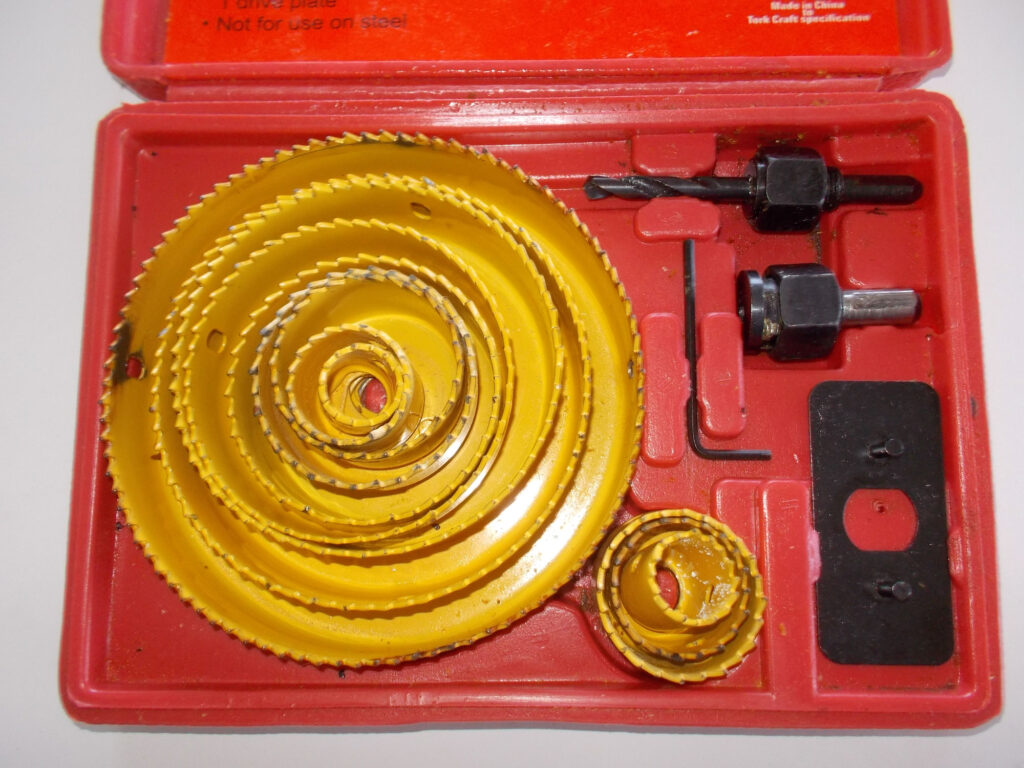
- These are the two mandrels and the Allen key used to tighten the grub screw in each to secure the centring drill bit – which can be used in whichever mandrel is being used; the smaller one obviously is used with the smaller holesaws.
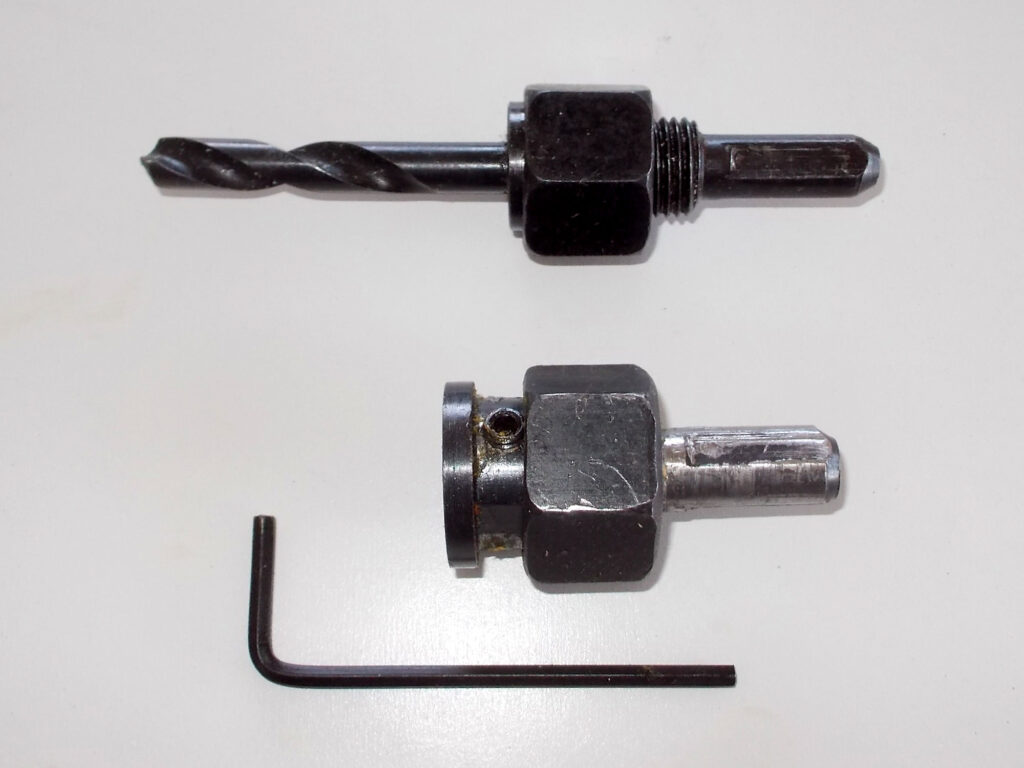
- This is what is called the drive plate and its purpose is to spread the torque load on the mandrel. This has circular boss with flat edges on two sides and the holesaw fits over this. However, the larger the holesaw’s diameter, the greater the strain on the holesaw itself and its centre attachment hole can possibly be worn or damaged if put under too much strain.
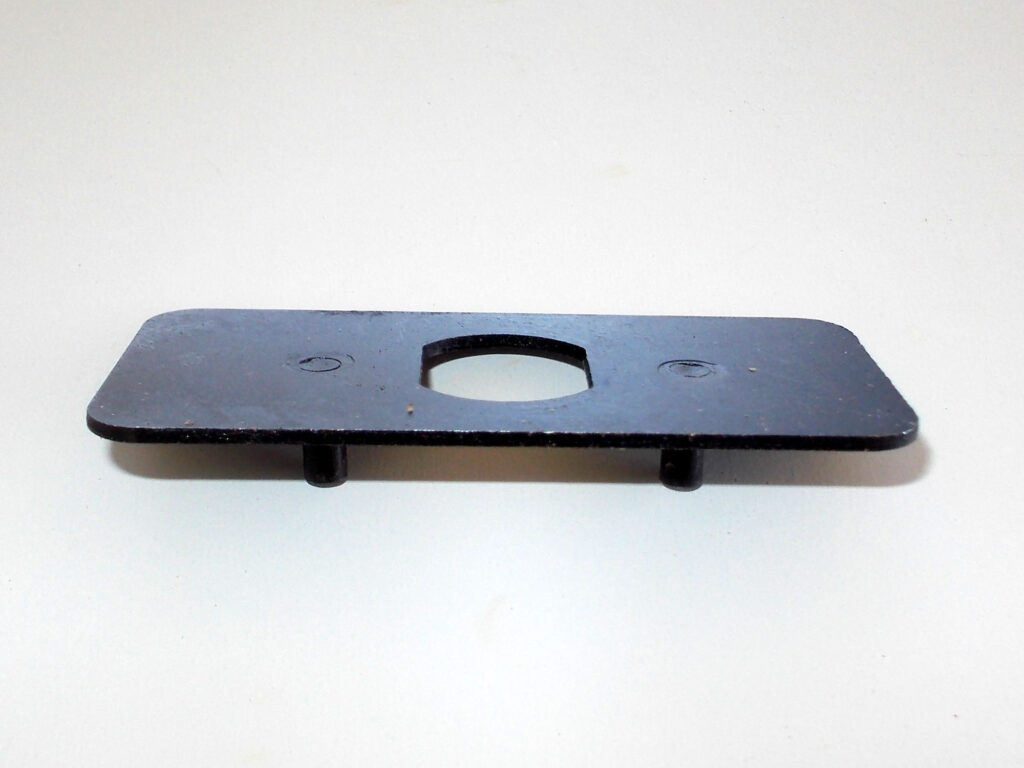
- So the high strength drive plate is fitted on to it and its two locking pins lock into the holesaw. This ensures that the rotational force is spread and there is no risk of damage to the holesaw itself. Note that the far smaller holesaw on the right does not require the use of a drive plate and in any event, it far too small in diameter to accept it.

- Just as an aside… if you are making a wooden toy requiring wheels, a holesaw makes rather good ones… naturally this is just the rough cut, before the edges are cleaned up and sanded down and rounded off.

- Oh … dear… the hole you made for the down lighter, umbrella pole or whatever, is too small. Well here is a crafty solution… Take the holesaw you originally used and slip it on to the shank. Then wind a few coils of string tightly around it.

- Now slip the holesaw of the correct size on to the shank and tighten as normal. You will see that the string holds the latter a couple of millimetres above or behind the ‘incorrect’ saw’s teeth, which stand proud.
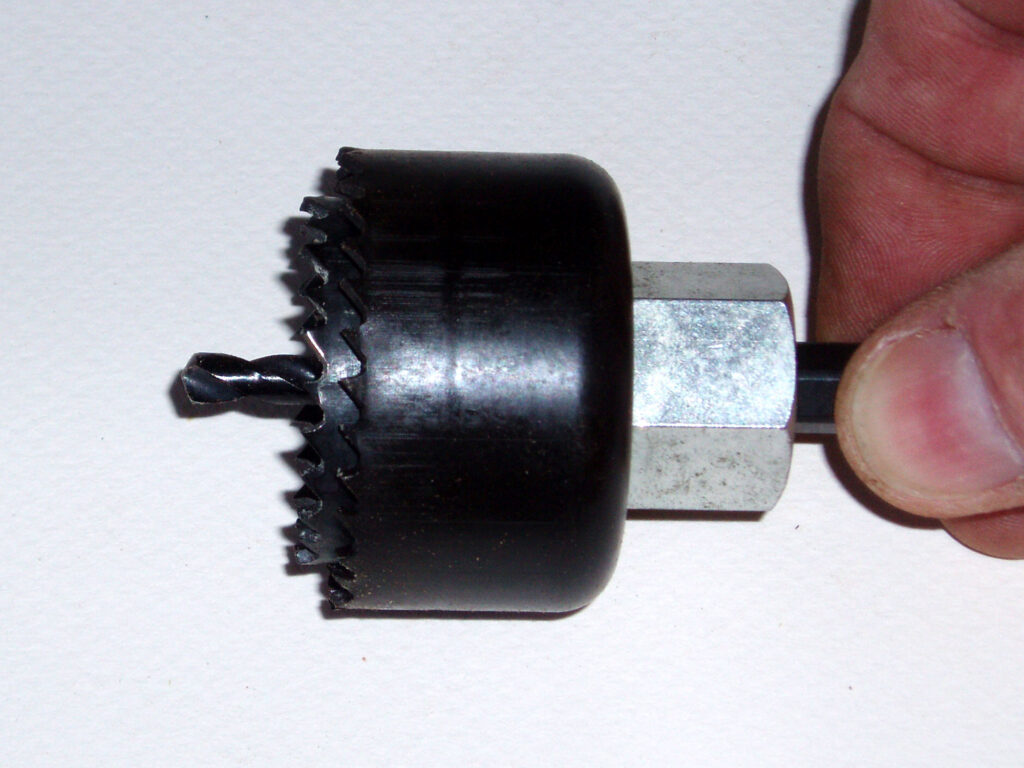
- Slip the contraption into the hole you made and you will find the ‘incorrect’ holesaw will keep the new ‘correct’ one centred and you can begin drilling. Generally, you need only start the new, larger holesaw as once it has penetrated a few millimetres, it will be self-centring. Now repeat the procedure on the underside of the wood, so that you get a smooth edge on both ends of the new, larger hole you have made. Only now you can remove the string and smaller holesaw and continue resizing the hole with the larger, correct holesaw. You should end up with a hole the right size, and a wannabe serviette ring into the bargain. In fact if you like you could use the same technique to make serviette rings.
Hint:
In the event that the hole you have made is in the incorrect position or too large, use a second holesaw to cut a disk slightly larger than the hole you have already made, and sand it to fit tightly into the hole. Glue it into position, allow time for the glue to fully cure, and then drill the hole again – and do it properly this time, OK?!

- Here is a selection of bi-metal holesaws designed for use on steel and but they can also be used on soft and hard woods and PVC. These are in the sizes: 41mmØ, 44mmØ, 48mmØ, 51mmØ, 54mmØ, 57mmØ, 60mmØ, 64mmØ and 67mmØ.
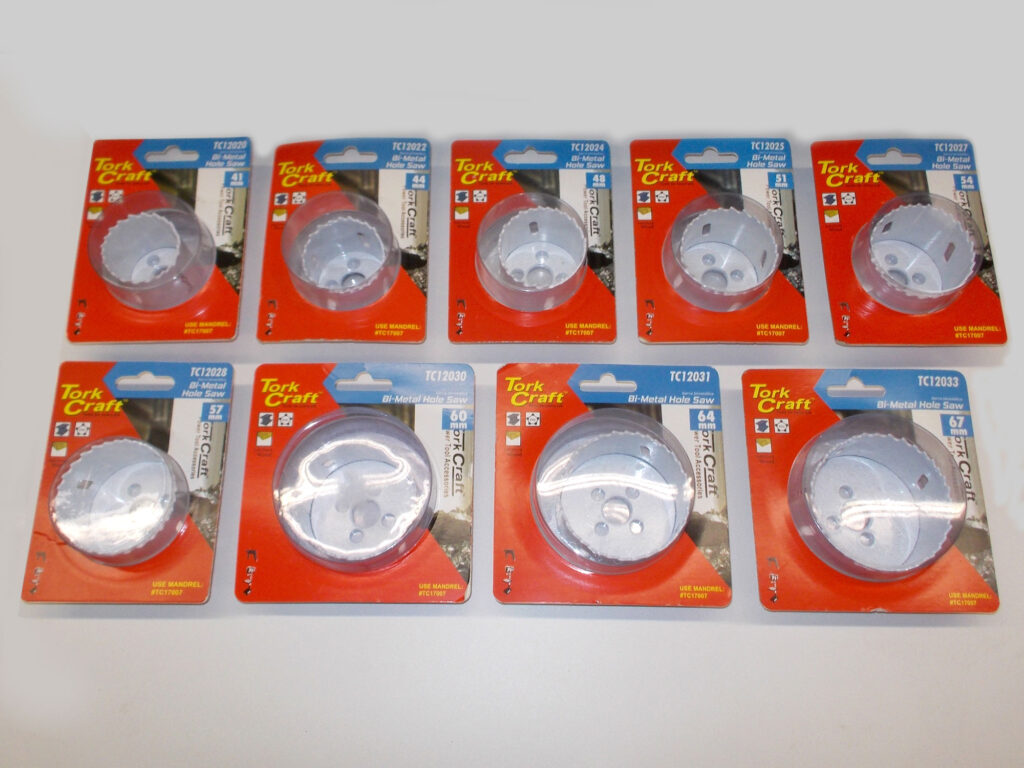
- In the same range by the same manufacturer… 70mmØ, 73mmØ, 76mmØ, 79mmØ, 83mmØ, and 86mmØ.
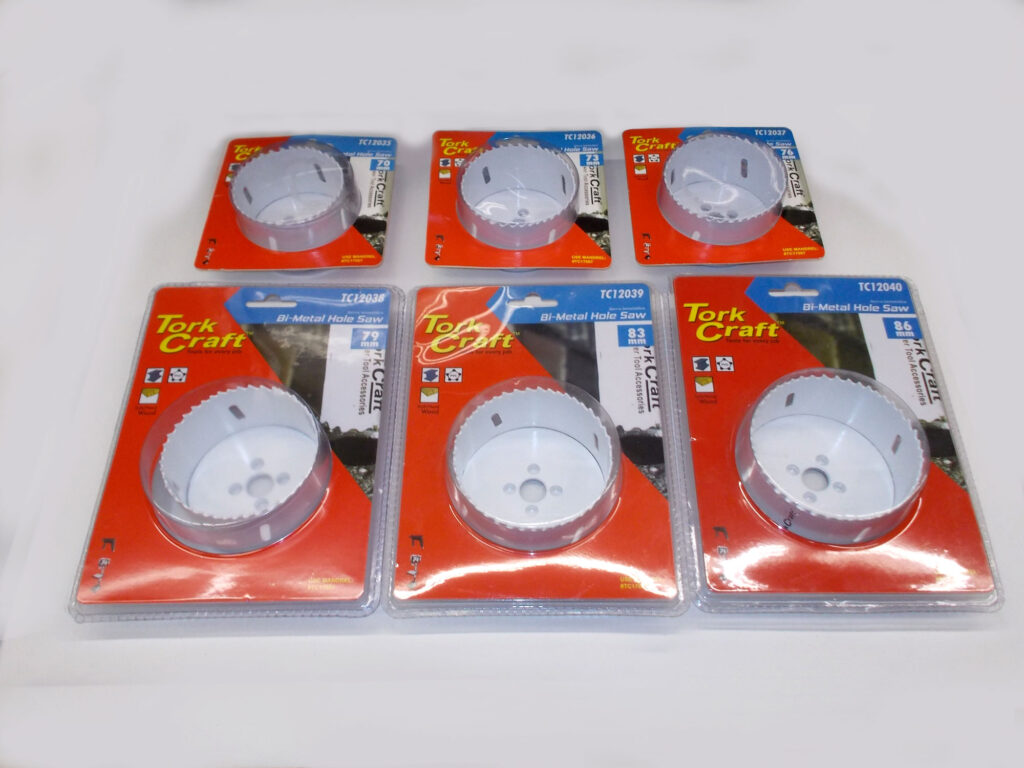
- And finally, what were in stock… with a gap between the first and second holesaw… 89mmØ, 140mmØ, and 152mmØ.
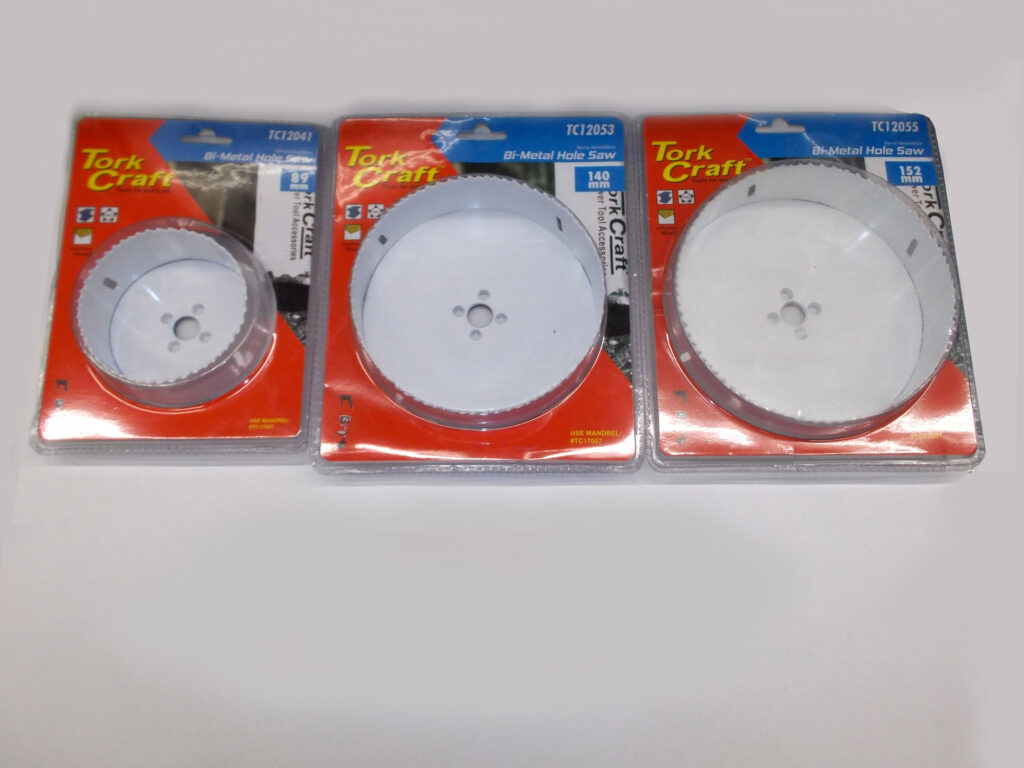
- This is a quick change mandrel for bi-metal holesaws and comes with two adaptors, allowing it to be used with holesaws from 14mmØ-30mmØ and 32mmØ-152mmØ.
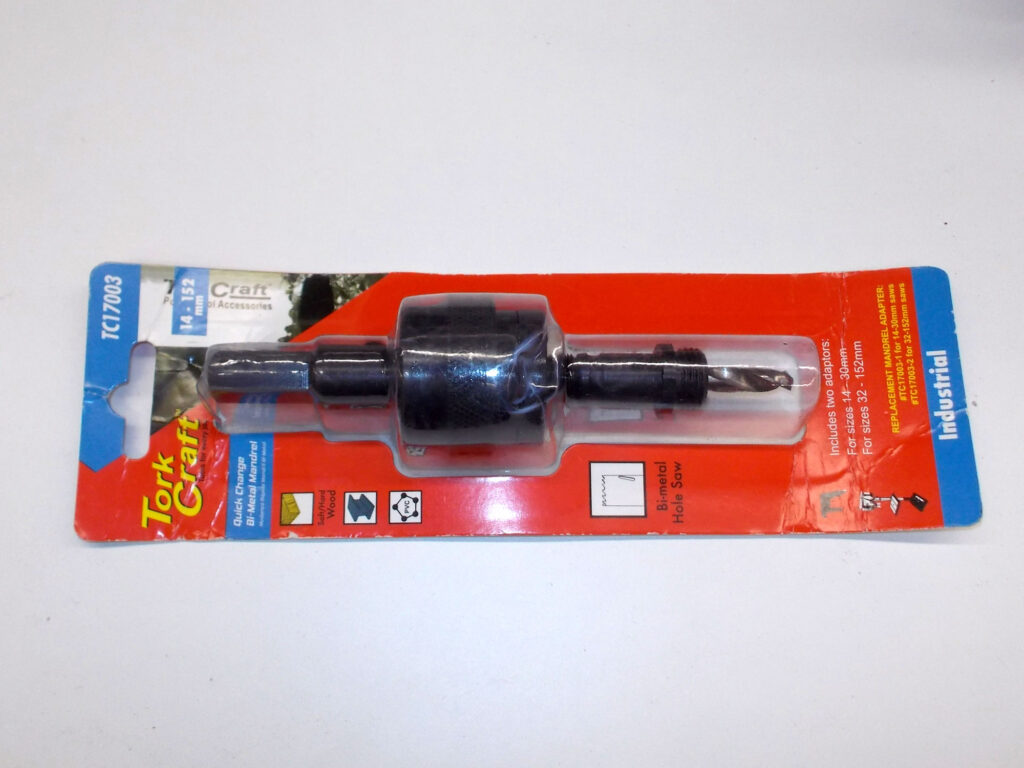
- These bi-metal holesaws are designed for cutting deeper holes and are shown in the following range of sizes: 16mmØ, 19mmØ, 20mmØ, 25mmØ, 30mmØ, 32mmØ, 35mmØ, 38mmØ, and 40mmØ.
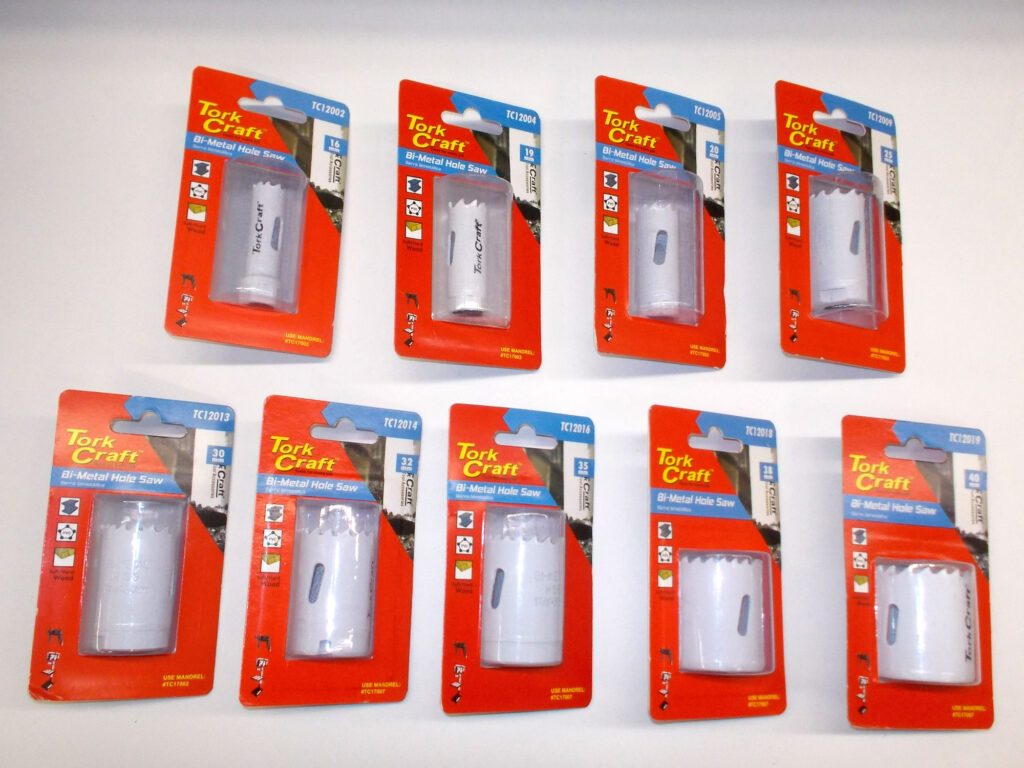
- This mandrel is a smaller and single adaptor version of the one above and is for use with only the small bi-metal holesaws shown immediately above.
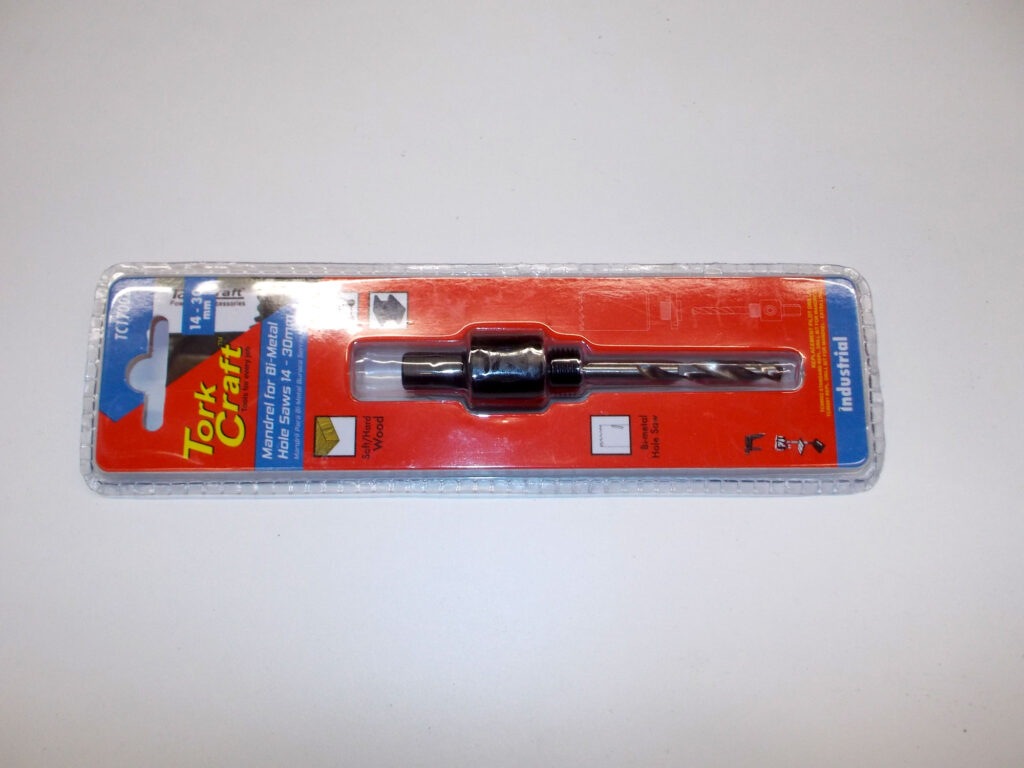
- Here are two holesaws designed for use on sheet metal – 30mmØ and 35mmØ.
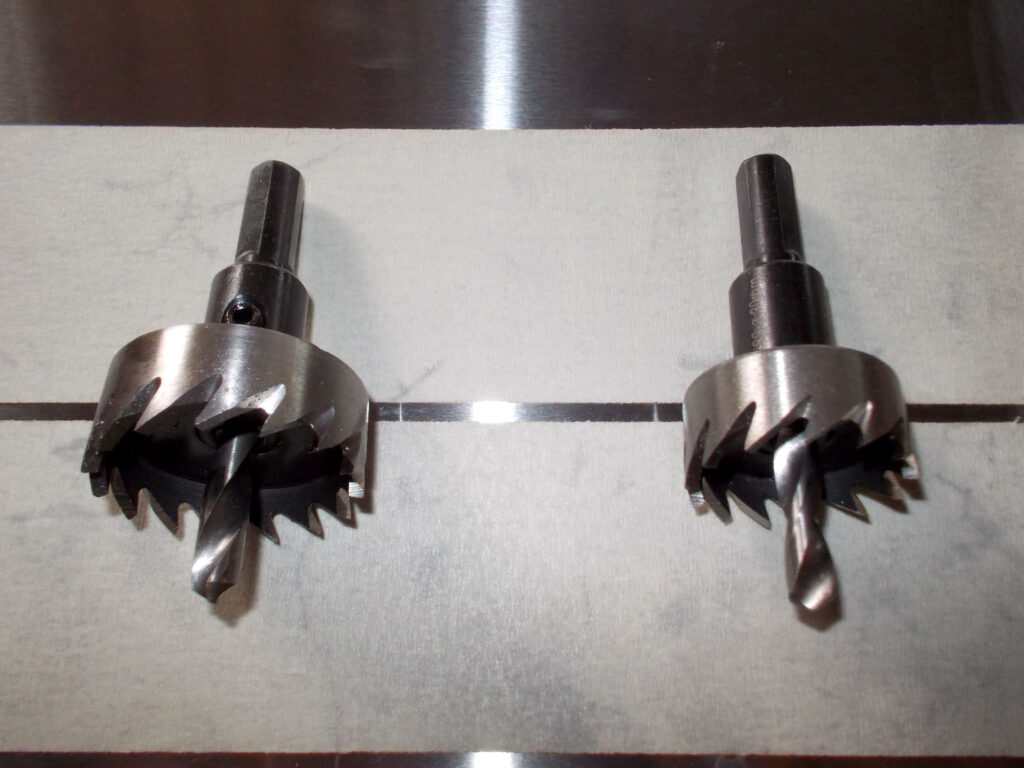
- Each saw is supplied with an Allen key to replace the pilot hole drill bit in the mandrel if it ever becomes blunt and needs to be replaced or resharpened.
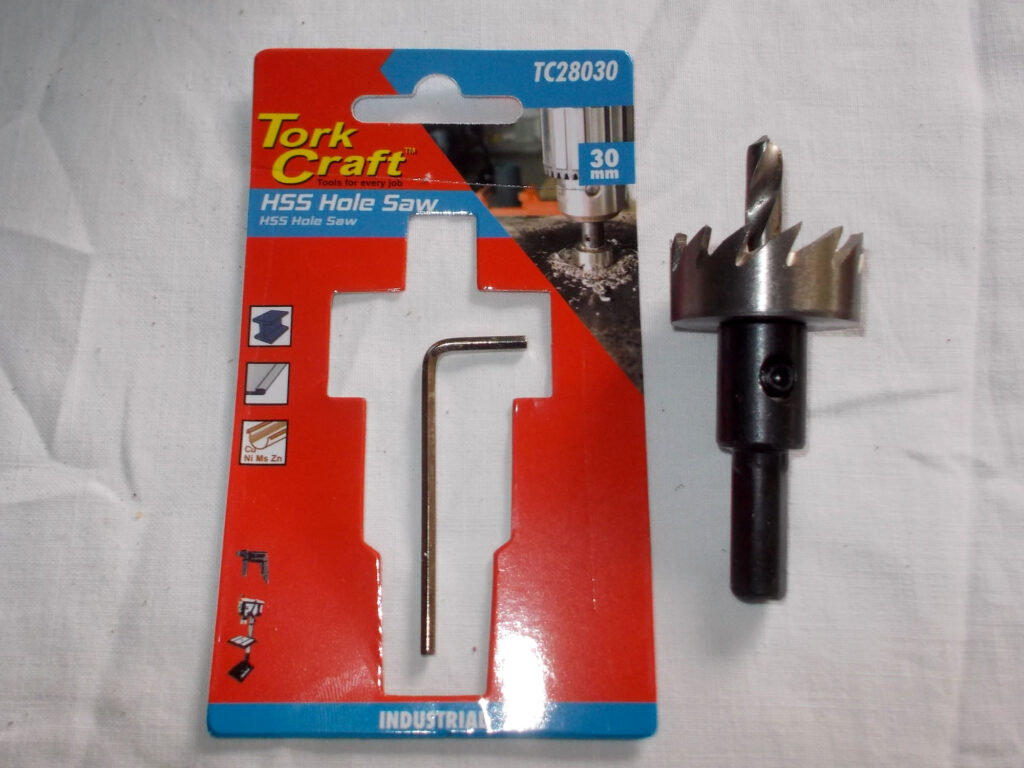
- This is where you need to be careful… drilling speed. Do not exceed the recommended speeds; if anything, err on the safe side and run them at a slow speed (with plenty of cooling lubrication to combat the heat generated by friction).
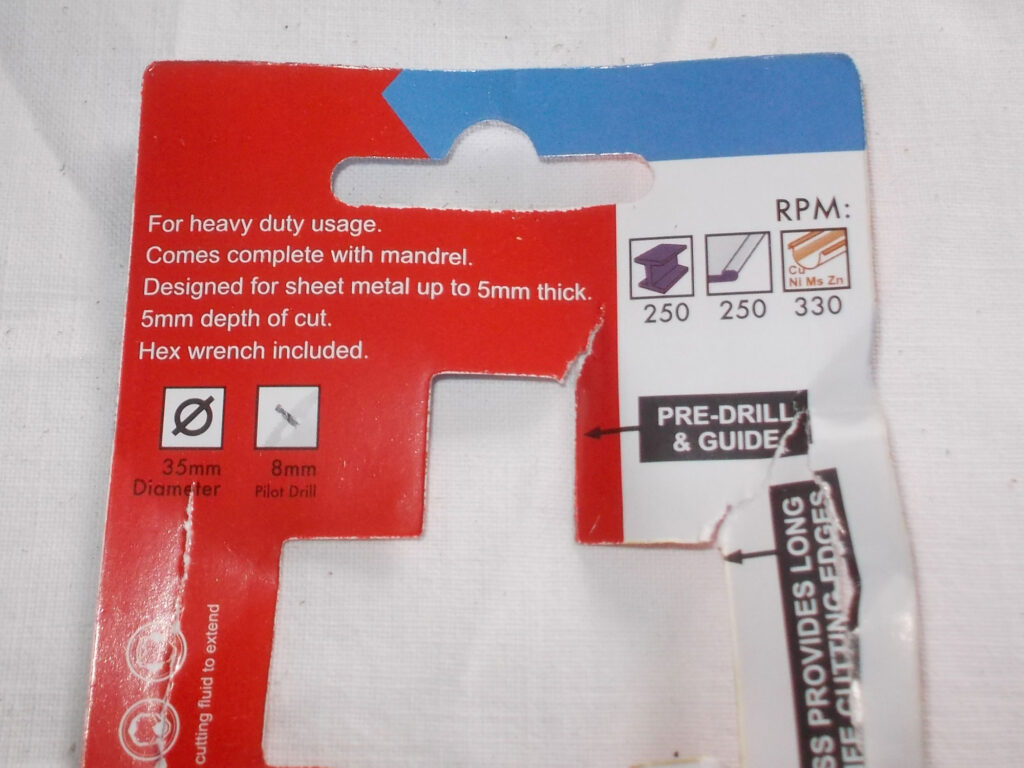
- Maximum cutting depth capacity in steel is 5mm and maximum drilling speed is 250rpm in the case of the 35mmØ holesaw.
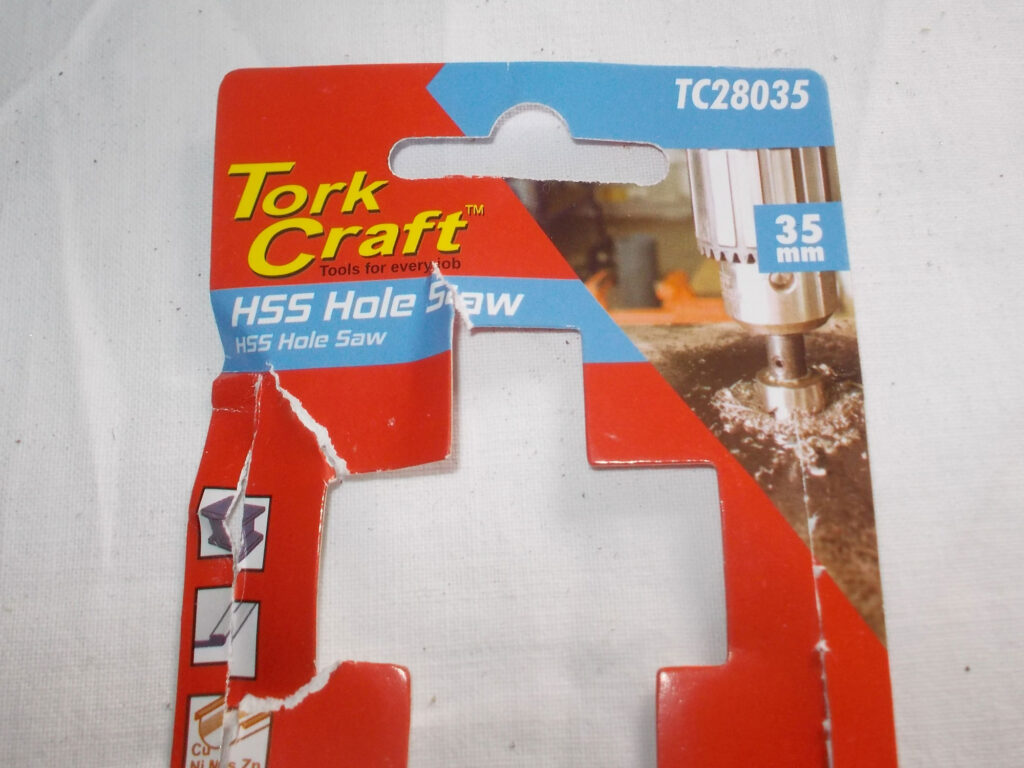
- Maximum cutting depth in steel when using the 30mmØ holesaw is also 5mm.
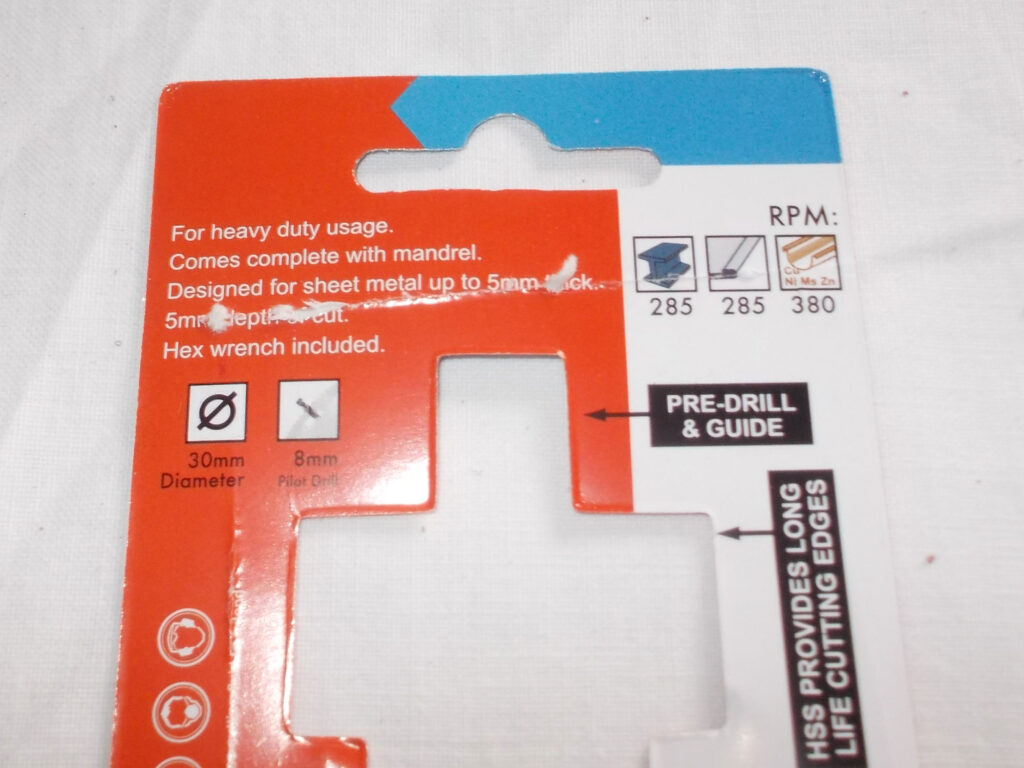
- The 30mmØ holesaw maximum speed is slightly higher, however – 285rpm. It is best to keep the packaging with their respective holesaws – possibly in a small plastic coin bag from your local bank – so that you never exceed the maximum rotational speed for whatever material on which you are working.
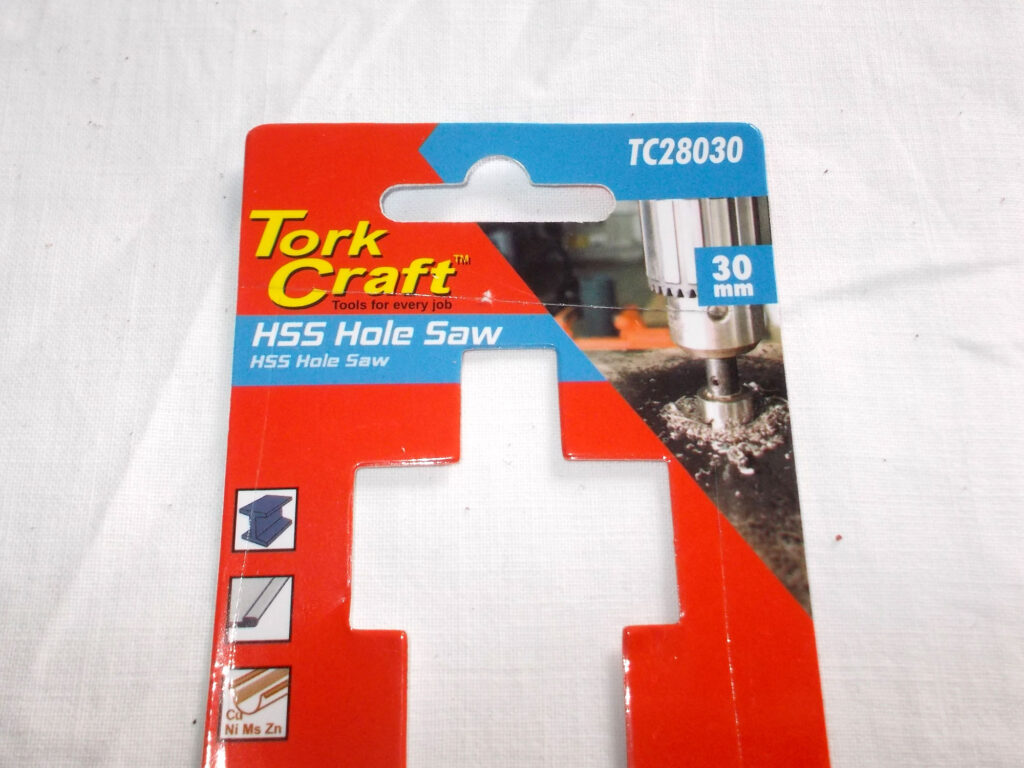
- The larger the diameter of the holesaw – irrespective of what type it is – the harder it can be to position the centring bit exactly on the spot. Here is a tip… drill a small pilot hole in the precise spot. You can use a point punch to make an indentation, but this actually works better – well, I think so anyway! So there!
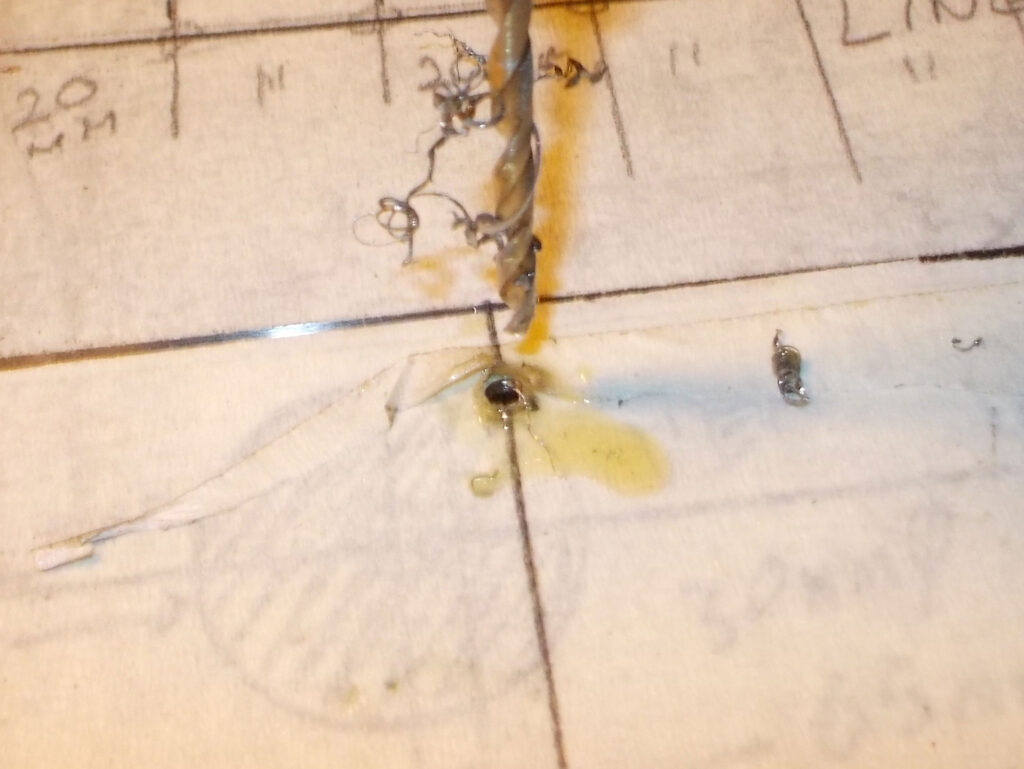
- Now you can use the holesaw to cut the hole. Note the liberal use of coolant (in this case oil). You always use a metal cutting fluid or lubricant when you are drilling or cutting metal as among other benefits, it will decrease cutting temperature, reduce friction between tool and workpiece and extend the tool’s life.
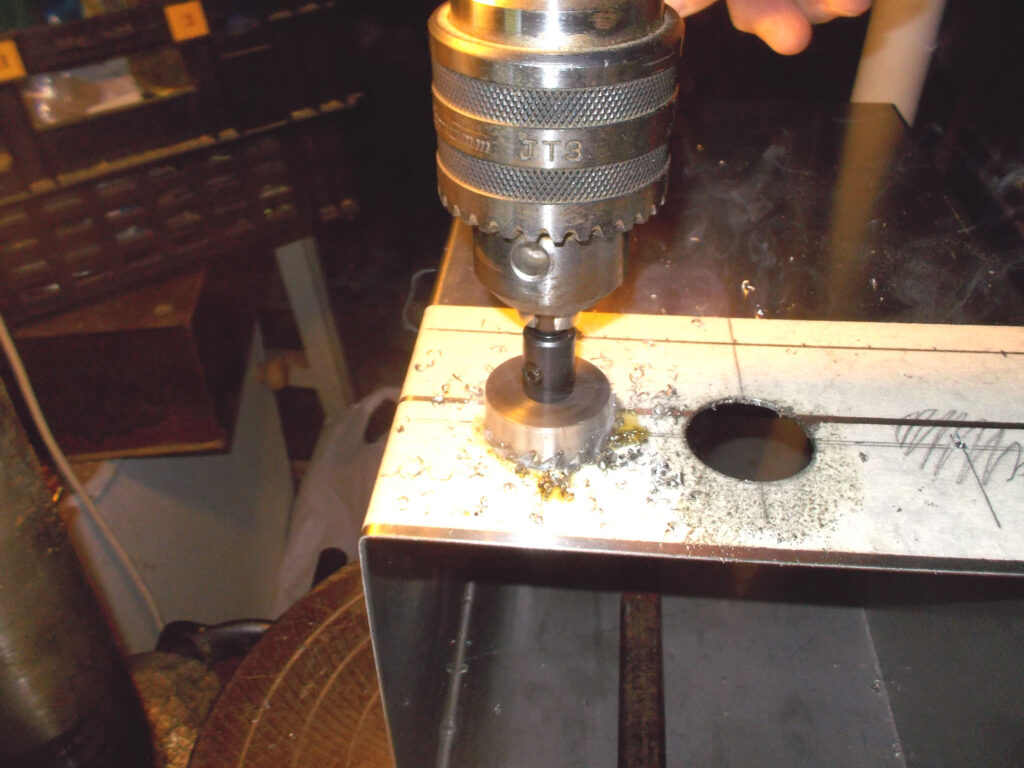
- And there is the result – three perfectly aligned and perfectly spaced 35mmØ holes. The three made on the other side were similarly perfectly aligned and spaced.
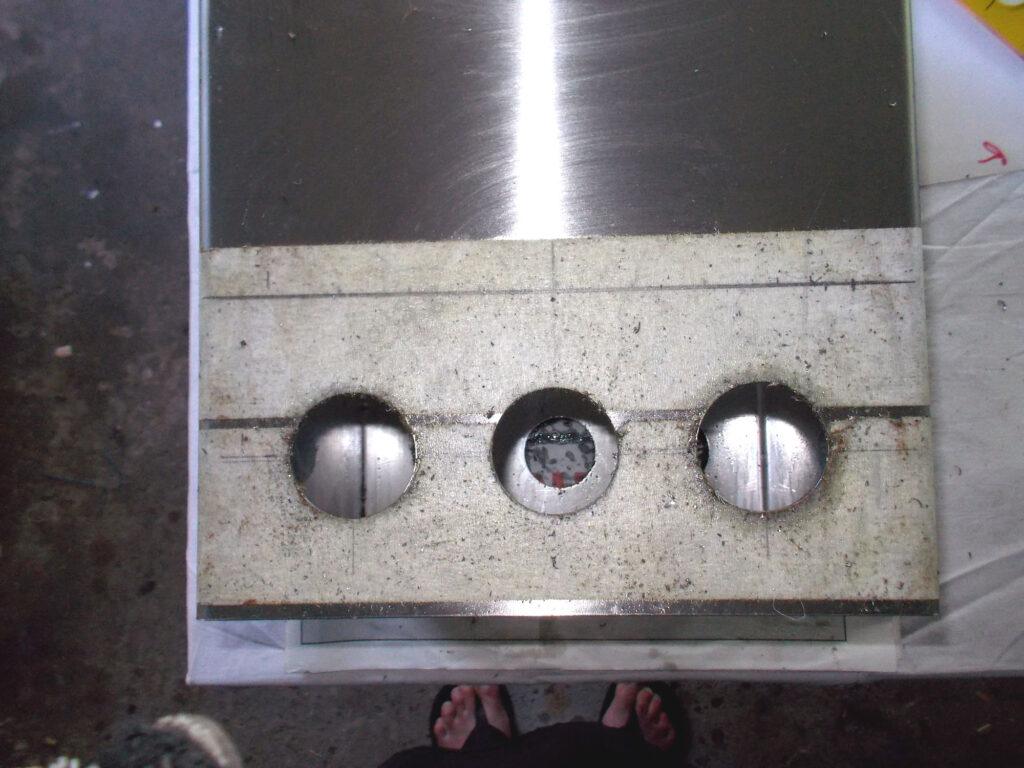
- A close-up of a TCT 60mm masonry core bit/holesaw and its 110mm SDS adaptor (top).
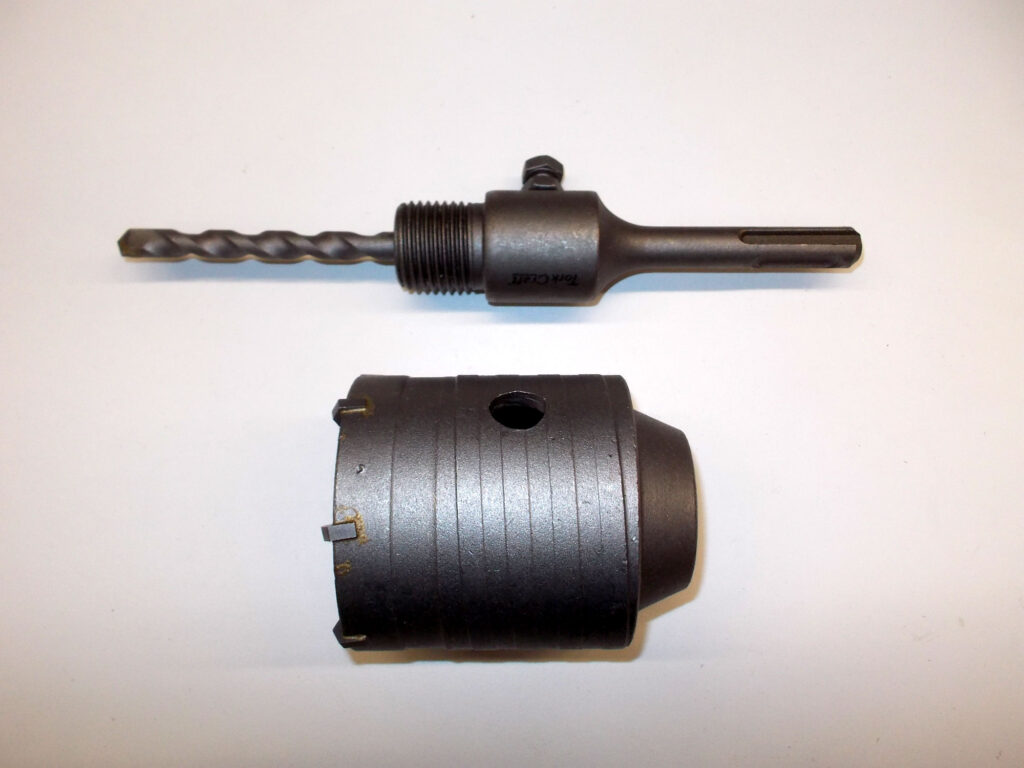
- Two more adaptors, in this case an SDS 110mm on the right and an SDS 200mm on the left.
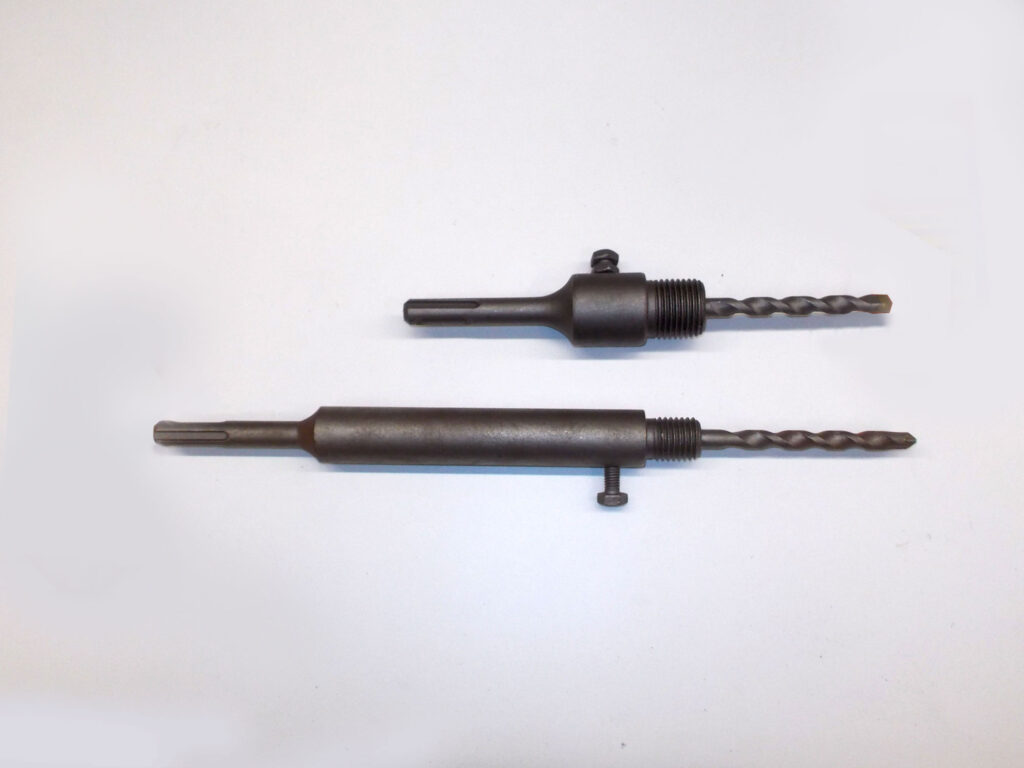
- Two examples of far longer TCT masonry core bits/holesaws (core bit longs). Both are 150mm long, the upper one with a diameter of 40mmØ and the lower one with a diameter of 50mmØ. They are sold with their bespoke centring bits, which have to long enough to protrude beyond the end of the cutting edge of the bits in order to steady the core bit until it has penetrated the surface far enough to prevent it skittering about on the surface.
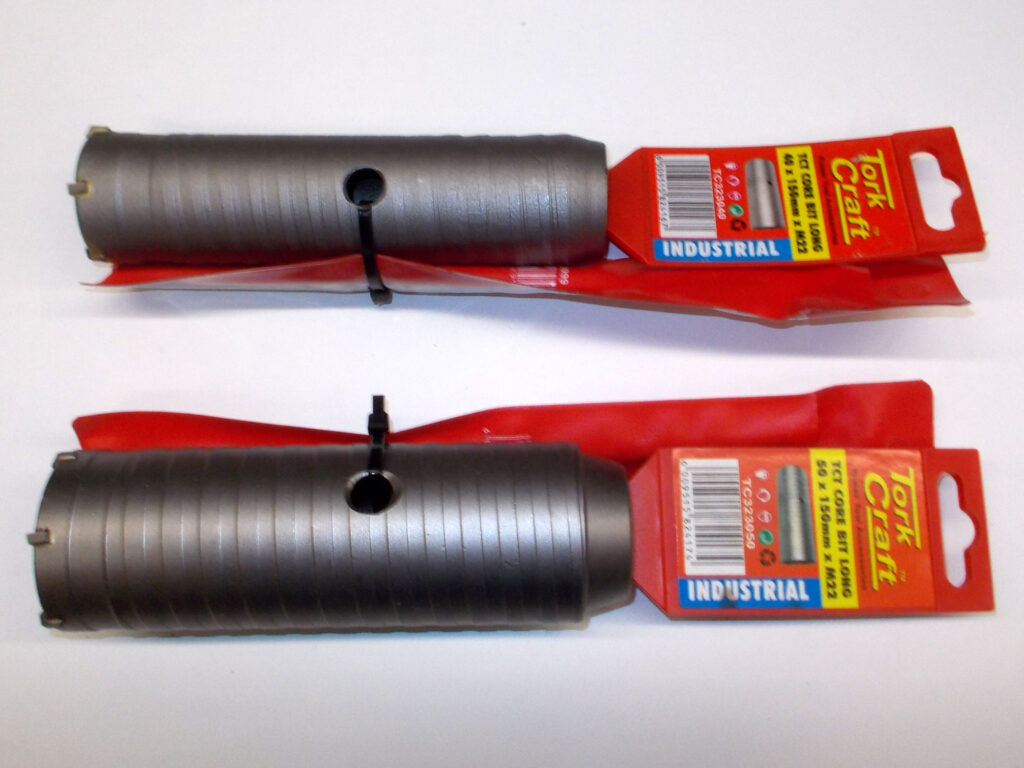
- Diamond core drills such as the vacuum brazed diamond core bit shown here (available in sizes from 6-110mmØ, [the version shown here is 110mmØ]) are considered by some to be faster cutting than their tungsten-carbide-tipped (TCT) alternatives and require less pressure. They are suitable for dry cutting of brickwork, aerated blocks, breezeblock, blockwork (for example when constructing flues, air vents and plumbing channels), porcelain, ceramic, marble, granite, glass, slate, and stone tiles.
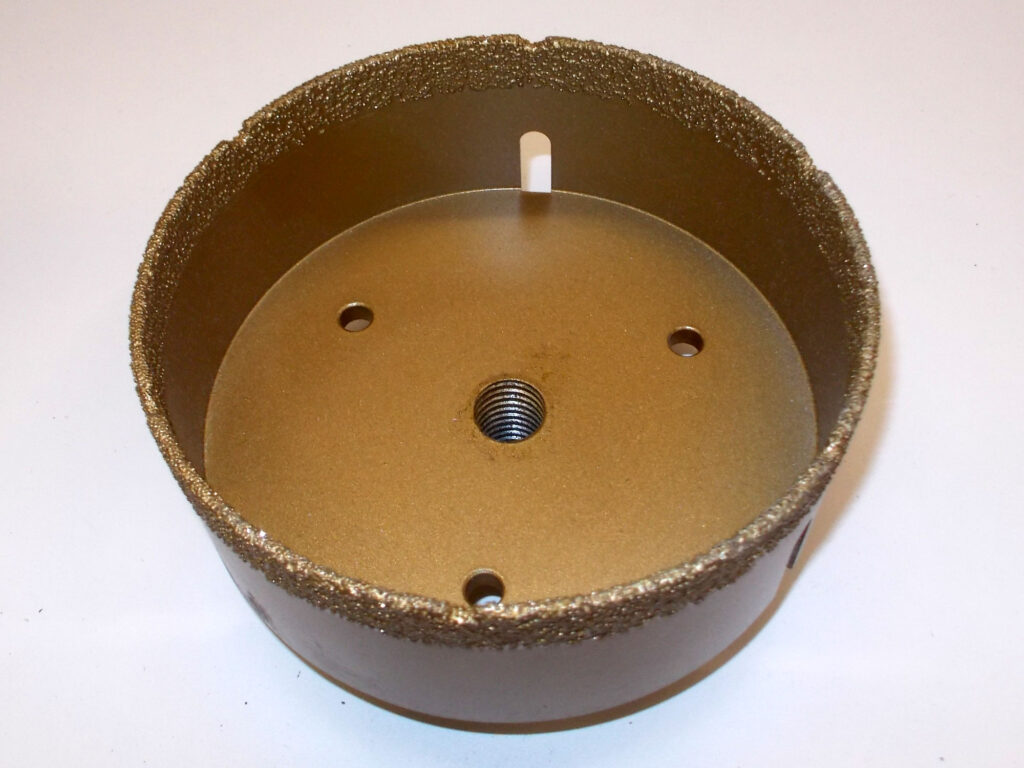
- This view of the core drill shows the very durable and hardwearing diamond coating on the cutting edge very clearly.
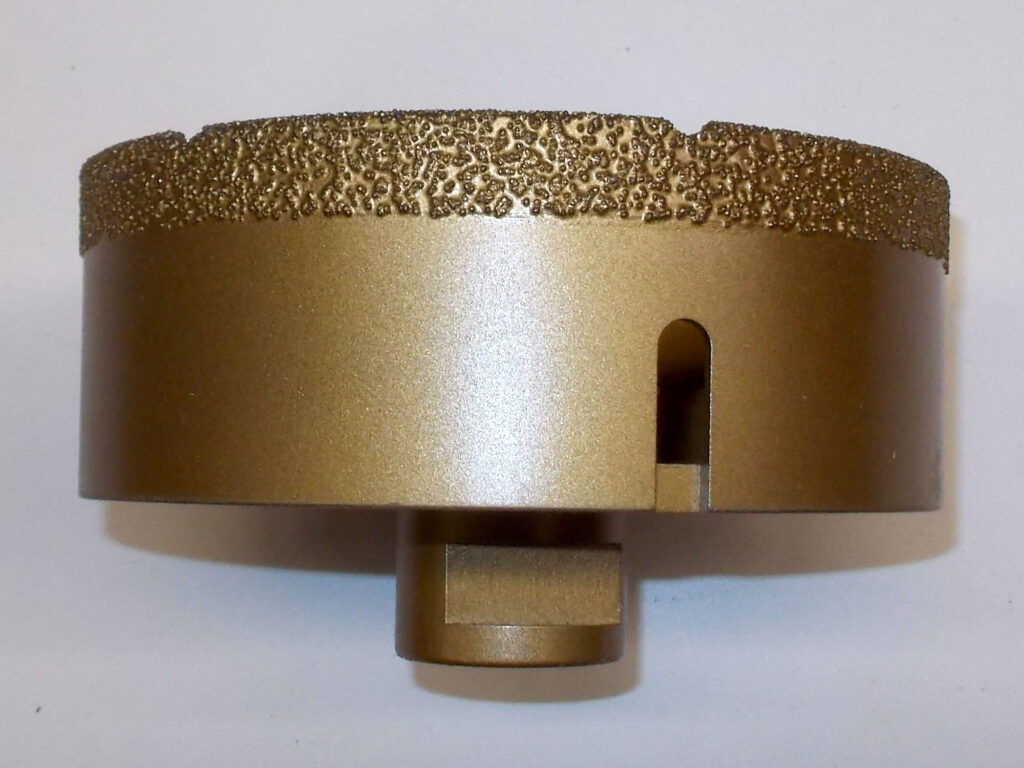
Next month… plug cutters, rotary rasps and screwdriver and other bits!
Panel:
Mica Stores carry a range of power drills, hand drills and bits and accessories. To find your closest Mica and whether or not they stock the items required, please go to www.mica.co.za, find your store and call them. If your local Mica does not stock exactly what you need they will be able to order it for you or suggest an alternative product or a reputable source.